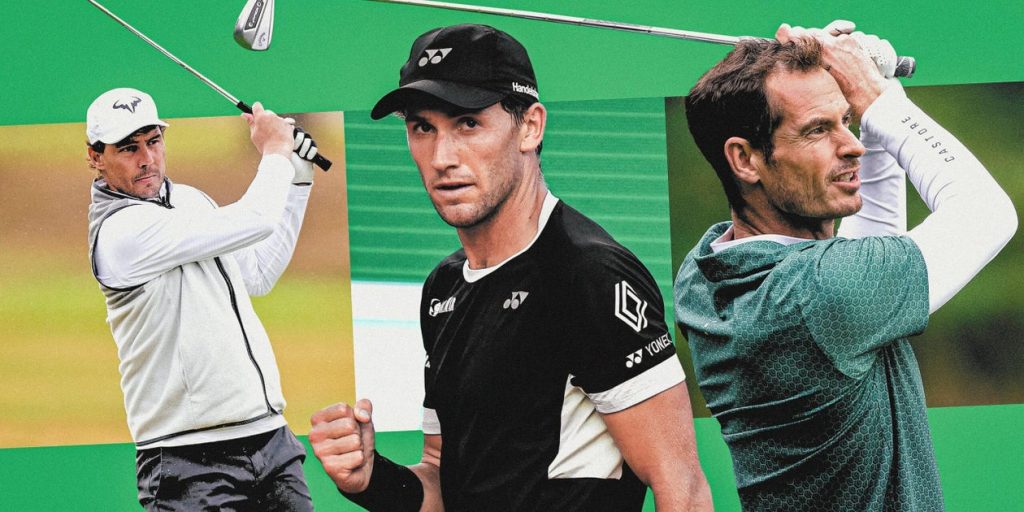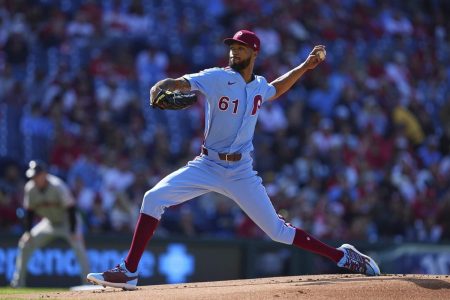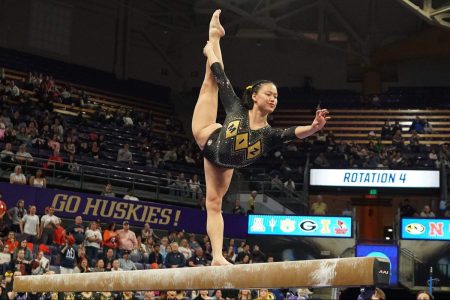Casper Ruud, the world No. 5 tennis player, has found solace in golf as a way to unwind and recharge, especially after a disappointing second-round loss at the Australian Open in January. With the Norwegian winter making outdoor golf impossible, Ruud turned to a simulator, finding comfort in hitting small, hard, white balls instead of fuzzy yellow ones. Golf has become a consistent escape for Ruud, and this week, it will take center stage as he skips the ATP 500 Rio de Janeiro Open—a clay-court event, his preferred surface—to participate in the Mexican Open in Acapulco, which begins on February 24. Before heading to Acapulco, Ruud will first travel to Vallarta to play in a pro-am golf event on February 18, part of the PGA Tour’s activities there. Despite the 621-mile distance between Vallarta and Acapulco, Ruud has been balancing his time between practicing on the tennis court and the golf course, even competing in an exhibition event in Guadalajara last week. His love for golf is evident, as he often brings his clubs along during the hard-court tennis season in North and Central America, which runs through February and March.
Ruud’s passion for golf is not unique among tennis players. He is part of a long tradition of ATP and WTA players who find joy and relaxation in switching between tennis and golf. Current stars like Carlos Alcaraz, a four-time Grand Slam champion, are sharpening their golf skills, while Alex de Minaur, a top-10 player, enjoys competitive rounds with fellow Australian players. Even men’s world No. 1 Jannik Sinner, despite his struggles on the course, is giving golf a try. The overlap between the two sports is significant, from the technical skills required to the low injury risk, making golf an ideal downtime activity for tennis players. It satisfies their competitive instincts without the intense, adversarial nature of tennis. For Ruud, golf is more than just a hobby—it’s a refuge. He has even admitted that he feels a bit sorry for the professionals he’ll play with in Vallarta, as he plans to barrage them with questions about the game.
The connection between tennis and golf runs deep, both in terms of the skills they require and the mental clarity they provide. Players like Ivan Lendl, who attempted a career as a professional golfer after retiring from tennis, and Yevgeny Kafelnikov, who often sneaked in rounds during the Australian Open, highlight how the two sports have long been intertwined. More recently, figures like Mardy Fish, who competed in a PGA Tour event in 2022, and Ash Barty, who considered a professional golf career after retiring from tennis, show how appealing golf is to those who thrive on the precision and focus it demands. Even Tim Henman, a former world No. 4 in tennis, has largely traded his racket for a set of clubs since retiring in 2007, praising golf for its low injury risk and the escape it offers. For Henman, the challenge of golf lies in its stationary ball, which can be deceptively difficult to hit after a career spent chasing moving balls at 140 mph.
For many tennis players, golf is not just a pastime but a mental lifeline. De Minaur, who describes himself as an “Instagram golfer,” credits the sport with improving his mental health. He loves the fresh air, greenery, and the chance to disconnect from the pressures of tennis. Similarly, Rafael Nadal, who often played golf during his career, has spoken about how it helped him prepare for major tournaments, including the 2010 U.S. Open. In his autobiography, Nadal expressed his admiration for Tiger Woods, not just for his skill but for his mental toughness and ability to refocus after setbacks. While Ruud doesn’t believe golf directly benefits his tennis game, it provides him with a sense of balance and fulfillment. “The golf course is one of my favorite places to be,” he said, emphasizing the importance of personal time for athletes.
The golf swings of these tennis players vary widely, reflecting their unique styles and backgrounds. Ruud, considered the best golfer on the ATP Tour, has a compact, powerful swing with a draw, a shot shape that is particularly challenging for athletes transitioning from tennis. Gabby Herzig, a golf analyst, noted that Ruud’s swing is impressive but could improve if he adjusts his backswing alignment. On the other hand, Nadal’s golf swing is as unconventional as his tennis style, with a fidgety setup and excessive movement during his backswing, which makes consistent contact a challenge. Novak Djokovic’s swing, while technically sound, lacks flexibility and relies too much on his arms, limiting his rotation. Meanwhile, Alcaraz, who generates significant speed in his swing, struggles with maintaining posture, a common issue for athletes transitioning to golf.
Ruud’s enthusiasm for golf has even led him to challenge Andy Murray, the former world No. 1, to a game ahead of next year’s Wimbledon. Murray, who avoided golf during his tennis career due to back concerns, has embraced the sport in retirement, participating in pro-am events and finding it a fulfilling way to fill the void left by tennis. Herzig points out that Murray’s swing reflects his tall, athletic build, but his tendency to throw his upper body at the ball could lead to inconsistent shots. Ruud, meanwhile, is clear about his priorities: while he dreams of turning professional in golf after his tennis career, he knows it’s unrealistic. For now, he’s content with the mental and emotional escape golf provides, as long as it doesn’t interfere with his tennis schedule. As he prepares for his pro-am event in Vallarta, Ruud is ready for whatever the course throws his way, his curiosity and love for the game shining brighter than ever.









